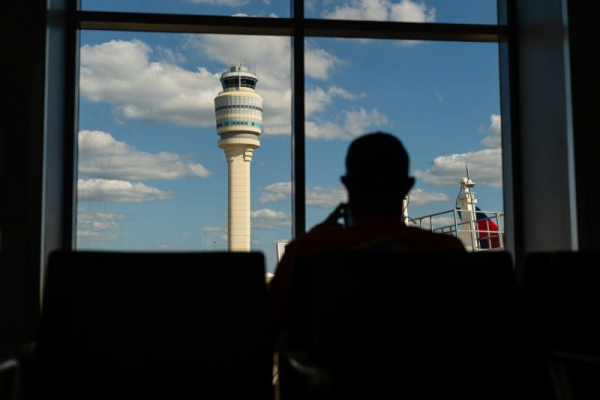FAA Implements Scheduling Overhaul Following Near Collisions and Expert Recommendations
In response to a recent surge in near collisions on U.S. runways, the Federal Aviation Administration (FAA) has announced significant changes to air traffic controller scheduling. This decision follows recommendations from an expert panel, which underscored the importance of providing controllers with more stable work schedules and consistent time off to combat fatigue.
FAA Administrator Mike Whitaker revealed the reforms on Friday, stating that controllers will now be required to have a minimum of 10 hours off between shifts, with a mandatory 12-hour break before commencing a midnight shift. Previously, controllers could be scheduled for duty as little as eight hours after the conclusion of their previous shift.
The move comes at a critical time for the agency, which is grappling with a severe shortage of staff. To address staffing gaps in towers and centers nationwide, controllers have been compelled to work extensive overtime, often enduring six-day workweeks.
This scheduling overhaul follows a harrowing incident at Reagan National Airport, where two passenger jets narrowly avoided a collision after being directed onto the same runway. This alarming event underscores the urgency of implementing measures to enhance air safety.
While the FAA's initiative is aimed at mitigating fatigue-related risks, the National Air Traffic Controllers Association (NATCA) has expressed reservations. The union warns that the proposed changes could exacerbate fatigue among controllers, particularly due to the existing understaffing crisis. NATCA emphasizes the need for careful consideration to avoid imposing undue strain on controllers and disrupting their lives.
Central to the recommendations is the elimination of the notorious "rattler" schedule, a grueling rotation involving five shifts over four days, followed by an 80-hour break before resuming duty.
As the FAA strives to bolster air safety and address workforce challenges, the implementation of these scheduling reforms marks a pivotal step in enhancing the well-being of air traffic controllers and safeguarding the traveling public.
Expert Panel Advocates Overhauling Air Traffic Controller Scheduling Amidst Fatigue Concerns
Mark Rosekind, chairman of the expert panel commissioned to examine air traffic controller scheduling, disclosed that the notorious "rattler" schedule currently dominates the work routine of seven out of every ten controllers. The panel, drawing on decades of research into scheduling patterns, refrained from prescribing a specific replacement model but presented the Federal Aviation Administration (FAA) with nearly 60 actionable items for improvement.
These recommendations encompass setting minimum rest periods between shifts, conducting surveys to gauge employees' preferred scheduling arrangements, and augmenting air traffic controller staffing levels. Rosekind emphasized the importance of scrutinizing both scheduled and actual working hours, noting the potential disconnect between planned and realized schedules.
Highlighting concerns regarding fatigue risk factors stemming from overtime, consecutive workdays, and variable workload scenarios, the report underscored the need for increased staffing levels to address these issues effectively. Alarmingly, the FAA's latest statistics, released in May, reveal a shortfall of 3,600 controllers against its staffing target. Despite efforts to ramp up recruitment, the agency netted a mere six additional controllers over the past year, according to testimony from the air traffic controllers' union chief before Congress in November.
In response to these findings, FAA Administrator Mike Whitaker announced plans to enforce a 10- to 12-hour window between shifts within the next 90 days. Acknowledging the necessity of overtime shifts in the interim, Whitaker reiterated the agency's commitment to expanding its controller workforce. However, revelations from sleep logs maintained by some controllers depict concerning instances of inadequate rest, with certain individuals sleeping less than two and a half hours between concluding a day shift and commencing an overnight shift on the same calendar day.
The urgency of scheduling reforms is underscored by data from a 2001 study cited in the report, which revealed that half of all on-the-job errors among controllers were attributed to fatigue induced by their work schedules. Moreover, over three-quarters of surveyed controllers admitted to experiencing near-drowsiness while on duty, with one-third reporting instances of nodding off behind the wheel, particularly following the midnight shift—a culmination of the grueling rattler sequence.
Former NTSB Member Leads Scientific Expert Panel on Air Traffic Controller Safety and Work Hours
Comprising three distinguished experts in the field, the Scientific Expert Panel on Air Traffic Controller Safety, Work Hours, and Health was spearheaded by a former member of the National Transportation Safety Board (NTSB). This panel was convened with the paramount objective of addressing critical issues surrounding air traffic controller safety, optimizing work hours, and safeguarding their overall health and well-being.
In conclusion, the findings and recommendations put forth by the Scientific Expert Panel on Air Traffic Controller Safety, Work Hours, and Health, under the leadership of a former National Transportation Safety Board member, underscore the imperative need for comprehensive reforms within the air traffic control sector. By prioritizing safety, mitigating fatigue risks, and promoting healthier work schedules, these initiatives strive to enhance the efficiency and reliability of air traffic control operations while ensuring the well-being of controllers. Moving forward, the collaborative efforts of regulatory bodies, industry stakeholders, and labor unions will be crucial in implementing these reforms effectively, thereby fostering a safer and more resilient air transportation system for all.








![Unmatched Excellence: 30 Years, Zero Lost Bags - The Remarkable Record of [Airport's Name]](/media/k2/items/cache/11d1150d71d7fad2b9b66fe40cd35dcb_M.jpg)



